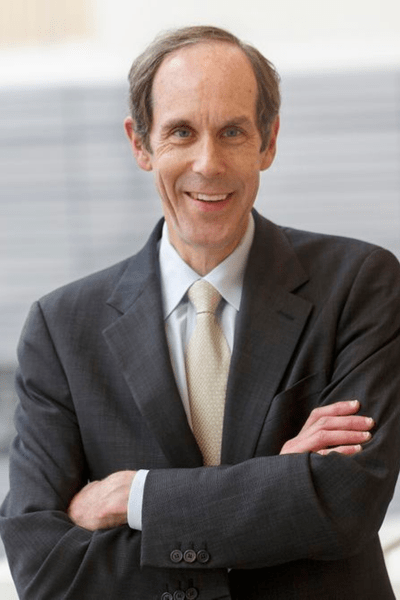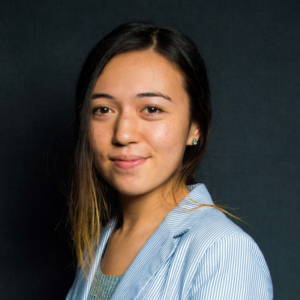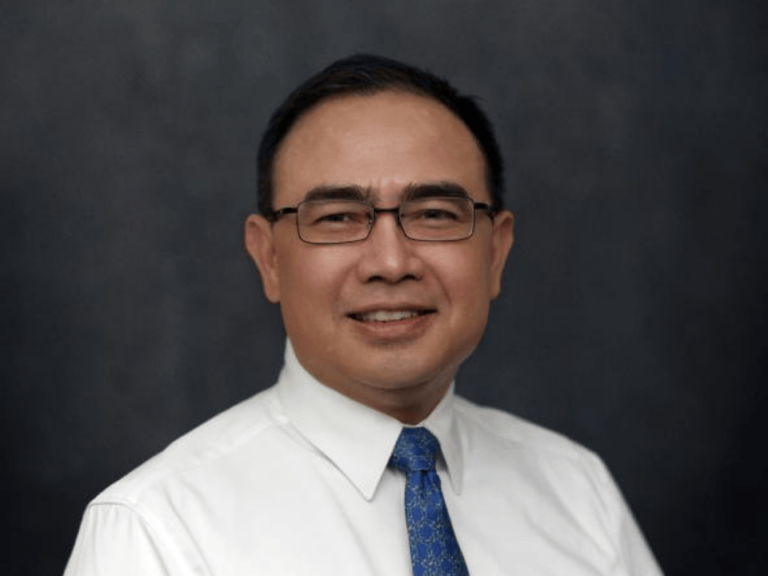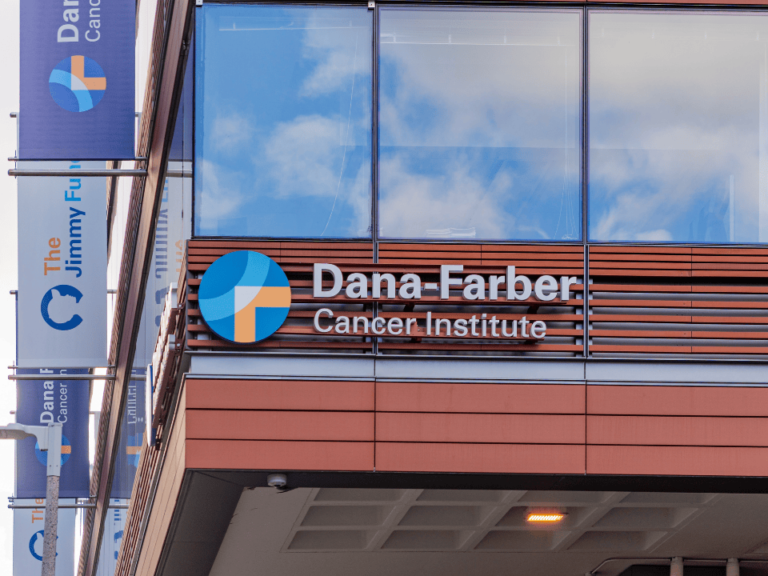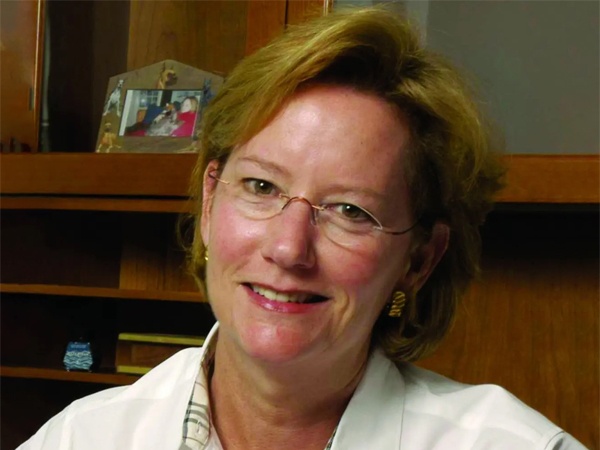Phil and Penny Knight made a record-setting $2 billion gift to OHSU Knight Cancer Institute.
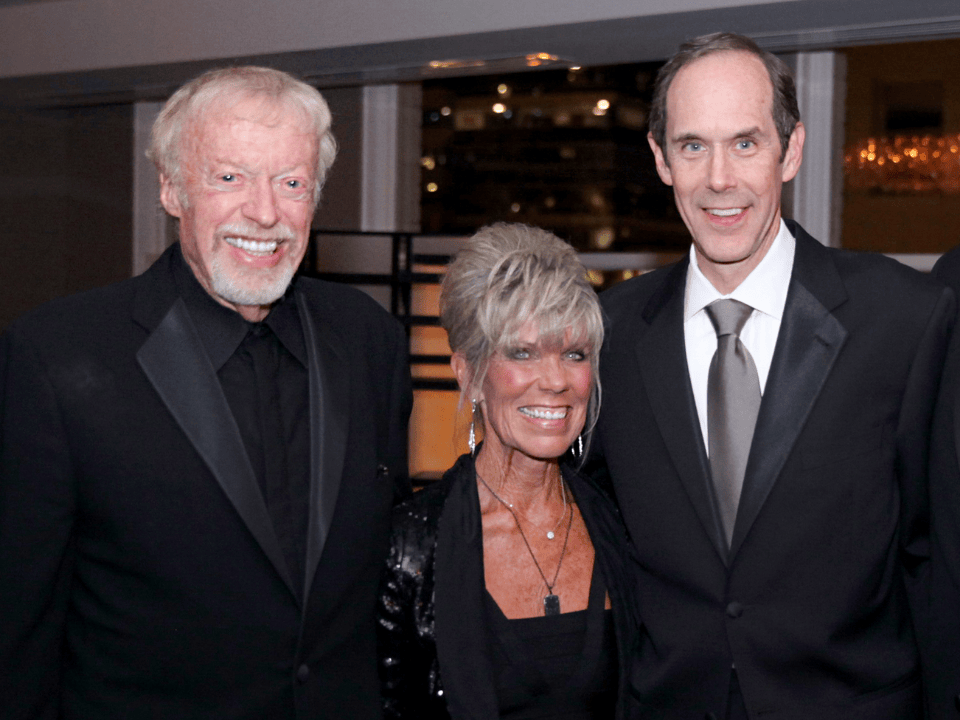

The gift—which appears to be the largest single donation ever made to any U.S. university, college or academic health center—was announced together with an organizational restructuring that makes the Knight Cancer Institute into a self-governed entity within Oregon Health and Science University.
The move also brings back the OHSU cancer center’s longtime leader and star scientist Brian Druker, who will serve as the inaugural president of the new organization, called the Knight Cancer Group.
“That gives us the ability to align the responsibility of effectively spending this groundbreaking record setting gift with the authority to do that,” Druker said to The Cancer Letter. “We’ve become a little bit like a Fred Hutchinson or a Huntsman. We’re following in their footsteps and we’re really grateful to have this opportunity to continue to make an impact for patients with cancer.”
The Knight Cancer Group will have its own board of directors and will govern the OHSU Knight Cancer Institute and manage OHSU’s cancer services.
The gift was announced on Aug. 14.
“We are grateful for the opportunity to invest in the next stage of the Druker-led revolutionary vision of cancer research, diagnosis, treatment, care, and some day, eradication,” the Knights said in a statement. “We couldn’t be more excited about the transformational potential of this work for humanity. We are confident that establishing the Knight Cancer Institute as a self-governed entity within OHSU will help the Knight and OHSU reach these goals.”
Phil Knight is a co-founder of Nike.
“As you can certainly imagine, a gift of this magnitude doesn’t come together overnight,” said Druker, who holds the JELD-WEN Chair of Leukemia Research and who was the lead developer of Gleevec, a pathbreaking drug for chronic myeloid leukemia. Gleevec first received an FDA approval in 2001.
The money and the cancer center’s newly-gained autonomy follow more than three months of discussions, Druker said.
This latest—and largest—gift by the Knights is intended to develop a fully integrated cancer care model that will expand and accelerate diagnostics, ensure access to innovative clinical trials informed by Knight researchers and simplify the experience for patients and families, Druker said.
Druker said that the ultimate vision for the OHSU Knight Cancer Institute is to integrate “all the great science we have with the best care on the planet.” A part of the gift will go towards streamlining the administrative burden on cancer patients and families in order to focus on healing and mental wellbeing.
“Think about getting those three words: ‘You have cancer,’ and now all of a sudden you’ve got to make 15 different appointments and battle with your insurance company. Why do we make it so difficult? Why can’t a patient or a family member make one phone call, get a caring, compassionate voice on the other end of the line, telling them, ‘we got this for you.’”
Last December, Druker’s unexpectedly resigned from his position of the cancer center’s CEO (The Cancer Letter, Dec. 6, 2024). At the time, Druker said he was stepping down because his “goals [were] no longer achievable at OHSU. We have lost sight of what is crucial and forgotten our mission.”
We have come so far with cancer treatments and diagnostics, but we want to match that with a care experience that helps people navigate what is often the worst time of their life.
Brian Druker
Prior to that, Druker stepped down as the cancer center director, becoming the CEO. The director’s job went to Tom Sellers (The Cancer Letter, Mar. 22, 2024). Sellers stepped down a year later, and was replaced by Lisa Coussens (The Cancer Letter, Apr. 11, 2025). Coussens serves as the interim director.
In a conversation with The Cancer Letter, Druker said he left the CEO role last year, because he didn’t want to “spend my time being a bureaucrat, having to get numerous approvals for positions,” Druker said. He stayed at OHSU as a researcher and physician. “I’m here to do research, take care of patients, and move the field forward,” he said.
But the outlook changed starting around mid-May.
“As we went through a transition in OHSU leadership, there was an opportunity to bring this back to the forefront,” Druker said.
The Knights started working closely with Druker and the Knight Cancer Institute’s team more than a decade ago. In 2013, the Knights pledged a $500 million donation to the Knight Cancer Institute if the university could match it within two years. In one of the most ambitious feats in fundraising history, the $1 billion Knight Cancer Challenge was successfully completed, thanks to $200 million in bonds from the Oregon Legislature, $100 million from Gert Boyle, chair of Columbia Sportswear, and donations from 10,000 individuals from all 50 states and 15 countries (The Cancer Letter, May 9, Aug. 1, 2014; June 26, 2015).
These funds were used to establish one of the first large-scale early cancer detection programs, spurring the development of numerous blood tests for the early detection of cancer. And the investment allowed the Knight Cancer Institute to continue to lead in targeted therapies and precision medicine.
“This gift is an unprecedented investment in the millions of lives burdened with cancer, especially patients and families here in Oregon,” OHSU President Shereef Elnahal said in a statement following the Knights’ most recent gift. “It is also a signal of trust in the superlative work that our clinicians, researchers and teammates at the Knight Cancer Institute do every day. Dr. Druker’s vision around a multidisciplinary system of care—focused squarely on making the patient’s experience seamless from the moment they receive a diagnosis—will now become reality. And thanks to the extraordinary generosity of Mr. And Mrs. Knight, Oregon will be the place to do it.”
Oregon Gov. Tina Kotek said the gift will be groundbreaking for the state.
“OHSU is Oregon’s only academic health care center, and thanks to the generosity and foresight of Mr. and Mrs. Knight, the nation will get to experience life-saving benefits from innovations and expertise in cancer treatment and care as the institution continues to push new boundaries. And this gift sends a signal to the world that Oregon is a place where amazing people make amazing things happen.”
Steve Stadum, who served as OHSU’s interim president until earlier this month and served as the Knight Cancer Institute chief operating officer during the Knight Cancer Challenge, worked with Druker and the Knights to bring this gift to fruition.
“This monumental gift is a game-changer, and not just for the Knight Cancer Institute,” Stadum said in a statement. “This is an investment that will elevate OHSU and our entire state, give Oregonians another reason to be proud, and most importantly, provide unparalleled support to those with cancer.”
Druker spoke with Paul Goldberg, editor and publisher of The Cancer Letter.
A recording of their conversation is available on YouTube.
This conversation is also available on Spotify and Apple Podcasts.
A transcript of the conversation follows.
Paul Goldberg: So, Brian, I hear you’ve got good news.
Brian Druker: Yes, we do. Bill and Penny Knight have generously agreed to donate $2 billion to the Knight Cancer Institute.
Wow.
BD: Yes, it is a big wow. It’s huge.
But it’s not just the money, which is record-setting, right?
BD: Yes.
It’s also the structure.
BD: Yes. So, the two headlines are the donation, but the other part of this is that the Knight Cancer Institute will become a self-governed entity within the largest structure of the university. So, that gives us the ability really to align the responsibility of effectively spending this groundbreaking record-setting gift with the authority to do that.
So, we’ve become a little bit like a Fred Hutchinson or a Huntsman. We’re kind of following in their footsteps and we’re really grateful to have this opportunity to continue to make an impact for patients with cancer.
And we’re talking [about this] because you’re back!
BD: I will come back as the inaugural president of this institute. Yes.
Is it the institute or is it an entity that controls the institute?
BD: Yes. Very, very well put. It’s an entity we are calling it the Knight Cancer Group that will manage the Knight Cancer Institute—both on the research and clinical side.
Oh, fantastic. So, there will be no more CEO, right?
BD: We’re going to have to figure out the right organizational structure. Clearly, we’re going to need to have a CEO of the healthcare system. We’re going to need to have a chief operating officer. We’ll have to have a head of HR. We’ll have to hire all of these individuals into all these positions and sort out how best to lead the research side and how to integrate all that into the care that we deliver.
So, I guess the reason we are all doing this is that it’s going to enable you to do some stuff that you aren’t able to do now. And what will it be? What’s the vision?
BD: The vision is we have come so far with cancer treatments and diagnostics, and all of us are integrating those into the innovative clinical trials that we’re running.
But we want to match that with a care experience that helps people navigate what is often the worst time of their life.
Think about getting those three words: “You have cancer,” and now all-of-a-sudden you’ve gotta do:
Make 15 different appointments, and you’ve got to battle with your insurance company.
You’ve got to think about your job, housing, finances.
And why can’t we make this simple? Why do we make it so difficult? Why can’t people, a patient or a family member, make one phone call, get a caring, compassionate voice on the other end of the line, telling them, “We got this for you. We’ll help you through every step of the way, and we’ll be with you on this journey. You just have to show up at this appointment. Oh, you need some mental health counseling? We got that covered for you. You want a nutritional plan? We’ll take care of that for you.”
Let’s make it easy.
So, is it more about science, or is it more about patient navigation? Because those are two different things.
BD: It’s about both. We’re not going to give up on research, or translating the best of research into the clinic, or to take advantage of the massive opportunities we have in cancer research right now with all the technologies we have to bring to bear on cancer.
So, we absolutely will not give up on cancer research, but we want to make sure that we’re not forgetting about the patient. And the patient is at the center of everything we do.
Let’s make it easy for them to navigate that cancer care experience.
And that’s the $2 billion?
BD: Well, it’s part of it—and part, some of the $2 billion will certainly go to research.
But a large chunk of it will go to ensuring that we can help patients navigate the experience simply and effectively, and they can focus on their health.
How long has this been in the works?
BD: Well, as you can certainly imagine, a gift of this magnitude doesn’t come together overnight.
As we approach the ten-year anniversary of what we called the Knight Challenge, which was when Phil and Penny Knight challenged us to raise $500 million with a two-year deadline. We completed that in 2015.
We have very purposely now at the ten-year anniversary, we come up with sustainable funding.
But one of the things that Phil Knight has always challenged me is, “That’s great. What are you doing that nobody else is doing? Or what are you doing that you’re uniquely qualified to do?”
And the reality is, at heart, I started off as a doctor, and I’m gonna finish my career as a doctor, and I have too many people and patients and families that are having difficulty navigating our complex medical care system.
So, as I think about what I wanted to do with this last chapter, I talked to the Knight family about integrating all the great science we have with the best care on the planet. And that has resonated with them.
And we’ve taken some time to shape that. We needed to get some structural changes in place, so we could actually make this happen. And so, you know, it’s been a while.
Did you have this idea in mind when you stepped down as CEO? Was that part of the plan because there was a plan, like you told me there was a plan, you just didn’t tell me what it was.
BD: Yes. Well, this vision certainly predated my stepping down.
And it was becoming clear that this was unlikely to happen. And so, at that point, it was, “Okay, that’s fine. What am I going to do? I don’t want to spend my time being a bureaucrat, having to get numerous approvals for positions. I’m here to do research, take care of patients, and move the field forward.
So, at that point, it was time to step away. It was time to do the things that bring me joy. And that was my research laboratory and taking care of patients.
But as we went through a transition in OHSU leadership, there was an opportunity to bring this back to the forefront. And over the last few months, we’ve worked incredibly hard on making this happen.
And no one knew about it, right? You managed to keep it silent.
BD: Well, as you can imagine, becoming a self-governing entity requires a huge amount of trust and collaboration between OHSU leadership and me. And it wasn’t going to happen in a day, or a week, or even a month.
And so, we’ve been hard at work at this since about the middle of May.
There was a lot to navigate. And it wasn’t clear as we navigated this process—at times you are 90% sure; at times, you’re 10% sure. And because we didn’t want to be in a situation where we made an announcement, and then it didn’t happen, that would really make us look bad.
So, we wanted to make sure we got all of the structural elements right. So, we’re confident that as we go into definitive agreements, as we launch this program, there’s nothing to derail us. So, part of that was keeping it to a very small group of individuals, making sure that we could at least come up with what I’ll call the architectural plans for this.
And now we need to bring the builders in, and we need to bring all the people in to make this happen.
So you needed the president, you needed the Knights, you needed yourself—who else? General counsel?
BD: General counsel, and a chief financial officer of the institution, to look at how this would impact the finance of the institution.
And that’s that?
BD: Yes.
If it’s mid-May, that would be when the deal with Legacy Health went away. Is that connected or unconnected?
BD: I don’t think they were connected. The reality is, I actually think if Legacy had been on the table when this came through, it might actually have made it more attractive.
But I think, ultimately, with Legacy not being on the table, perhaps there were less distractions and we could begin to focus on something like this.
But I, you know, whether Legacy went through or not, I think was immaterial to whether this would move forward, what the structure would be.
Well, that’s good to establish. So, basically, right now, most of the people watching this, or listening to this, or reading this, want to know who are the people at Knight Cancer Institute trying to hire?
Whom are you trying to hire?
Whom do you need?
What kind of positions?
BD: Yes. We want to have any number of positions from superstar researchers to clinicians that are experts in all the cancers, but that care deeply about compassionate care.
And I’ll give you an example.
Even at my own institution, two days ago, I got a call from a colleague whose brother had liver cancer. And within 24 hours, we had that patient in with an appointment. And I sent out notes to two of my surgeons. And in 10 minutes, I had an answer from one. And 15 minutes later, I had an answer from the second one, which was, “Oh, I’m so sorry. I didn’t get right back to you.”
That’s the kind of people that I want on my team, is that there’s a patient that needs help, let’s make sure they get help.
This is a good time to be hiring.
BD: It’s a great time to be hiring. And, if this gives us some protection and some additional funding and ability to hire great people that want to do great things for patients, please contact me.
Oh, well, good. That’s easy enough to do. Your email is easy to find.
I noticed that the names of people who knew about this that you listed didn’t include the director of the cancer center. Did she not know?
BD: Not until very, very recently. It’s not that there was any lack of trust or concern about the quality of our leadership. we have great leaders and great people. It really was just trying to keep this to a very, very small group of individuals. Because the reality is once you tell one person, they tell one person, and then all of a sudden, five people become 10 people becomes 20 people. Then The Cancer Letter gets wind of it. And I’m on a call with Paul Goldberg asking me, “Hey, is this true?”
We really wanted to keep it as close to the chest as possible until we were ready to make a big announcement and let the world know.
We really wanted to make this as big a splash as possible. And so, again, I hope I haven’t offended anybody by not bringing them in earlier. It really was intended. The reality is we still have a lot of work to go from where we are, to definitive agreements, to the program. And I need everybody’s help on it. And lots of notes that I’ve gotten today have been, “congratulations, how can I help?”
And that’s really where we are. We’re at the start line. We’re running a marathon and I need lots of people to help me along the way.
Who is going to be the director? Do you have that decided? I think Lisa Coussens is…
BD: Well right now, Paul, we’re reveling in the moment. I’m probably going to take the weekend off, and on Monday we’re going to roll up our sleeves and begin serious planning about who’s in what chair.
Lisa is incredibly well qualified to be a cancer center director, and she knows this field incredibly well. She’s a National Academy member, and we’re just lucky to have her on our team.
Is there anything that we didn’t cover, anything I forgot to ask?
BD: Well, I just view this as a great day for cancer patients. If we can improve the quality of care that we deliver with compassion, with simplicity, that’s what we want to be able to do and to deliver. This is gonna be good for patients.
Again, the research and the treatments have evolved so quickly. They’re so much better than when I started out, however many years ago. Integrating that with a compassionate care model, think about how many more people are gonna be surviving and thriving despite a cancer diagnosis.
Well, this field really needs to hear from its leaders a lot. Well, you’ve always been one of them, but it also places you right now into that position of being one of the sort of the key leaders and one of the key voices that must be heard. So I’m really glad to hear you’re back.
BD: Well, it’s good to be back. I’ve always thought about what we can do to have a positive impact on patients, both in terms of their outcomes and their care. And I’m hoping that I get to go out on a high note and what a great day this is to get started.
Well, wonderful. Great to see you back.
BD: I’m glad to be back and glad to be in this position.
Also, a huge thank you to Phil and Penny Knight. At this point, their gifts to the Knight Cancer Institute total $2.6 billion. What a remarkable legacy they leave for patients and their families. It’s absolutely clear that the Knights are really proud of what we’ve built here and wanna see us continue to build and grow.
It’s a healthy chunk of change.
BD: Yes, it is. Thank you so much. And well, you’ll only see me in Nike apparel.


